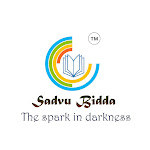
Grand test has been conducted on 5th July 2021 on our app "sadvubidda".in Sadvu bidda you will b getting.About our appSadvu bidda is a free app for students who are preparing for several entrance tests like TSEAMET/AP EAMCET and competitive examinations like TSPSC/APPSC.Benefits for students:Free weekly/monthly practice test4000+ Practice questions Plus 2000+ MCQS in...























